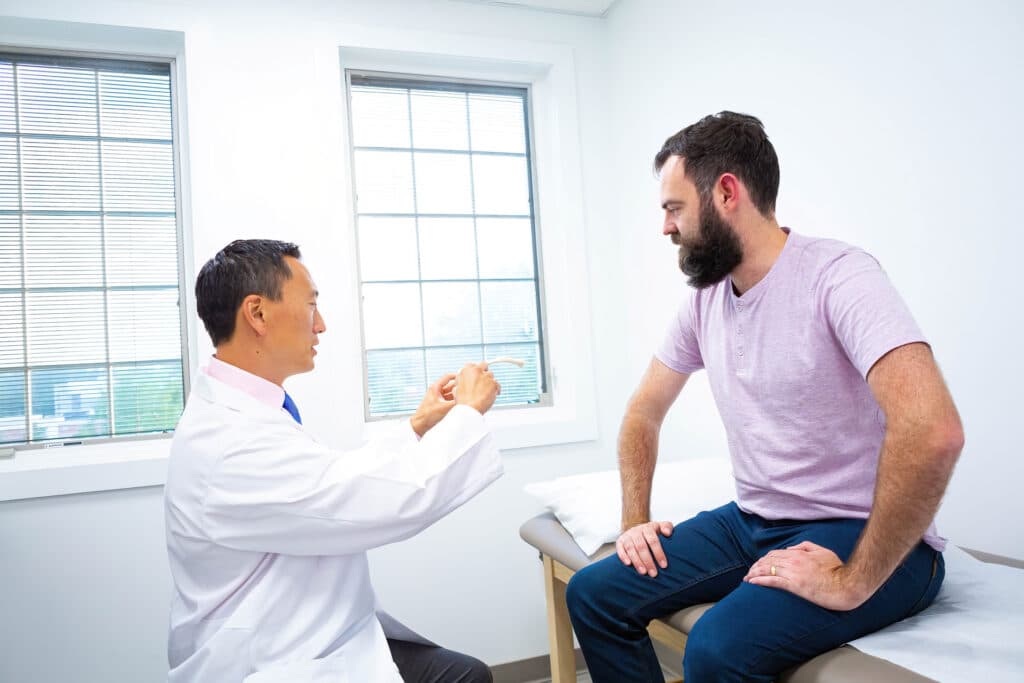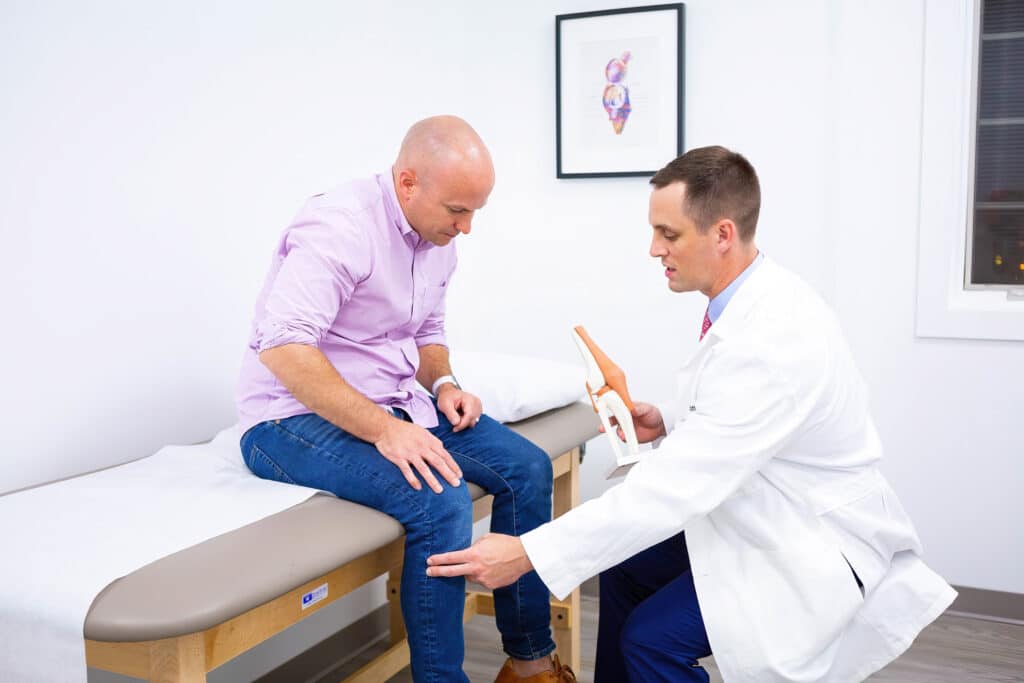
Physician Assistants
Physical & Occupational Therapists
KneeMRI ScansNon-OperativePhysiatry
Physical Therapy
Podiatry
Spine
Sports Medicine
TraumaUrgent Care
X-Ray Imaging

The patella is commonly referred to as the kneecap. It’s a small bone that fits over the joint made up of the bottom of the tibia (shin bone) in the lower leg and the femur (thigh bone). The patella helps lock the joint in place, and it’s held there by several ligaments. Patella stabilization surgery is performed when those ligaments become weak and the patella is in danger of displacement. Patella displacement can also occur when the patella is misaligned in the joint, either from the groove in which it sits being too shallow or because the cartilage beneath it is damaged or too thick.
Those who feel their knee is unstable (buckling, locking, or weak) should consult with a doctor to prevent further damage over time. The doctor will evaluate the knee with x-rays or an MRI or CT scan. If the doctor determines the patella needs stabilization, he can recommend nonsurgical treatment or surgical repair.
Nonsurgical treatment involves the patient wearing a brace to keep the patella in place while the area around it heals. Pain medications may be given to alleviate discomfort and reduce swelling while the knee heals. The patient also must reduce activity until the joint heals. Physical therapy and pool therapy may be recommended to strengthen the joint and return mobility.



If nonsurgical options do not stabilize the patella properly or permanently, surgery may be necessary. There are four types of surgical procedures performed to stabilize the patella. These are:
Patella Ligament Reconstruction: A graft of ligament from the patient or a cadaver is used to tie the bone in place better and stabilize it. Screws hold the new ligament in place until it heals properly. The screws are usually permanent, but can be removed later if they cause pain or other complications.
Recovery times from patella stabilization can vary depending on the procedure and the severity of the injury. On average, a patient is on crutches for up to six weeks after surgery while the joint heals. After that, physical therapy begins to return strength and mobility to the knee. Recovery takes at least 6-8 months, but full motion and strength could take up to a year.

© 2023 Princeton Orthopaedic Associates. The contents of princetonorthopaedic.com are licensed under a Creative Commons Attribution-NonCommercial 4.0 International License. Copying without permission is strictly forbidden.